Kegel Exercises
Kegel exercises help to strengthen the pelvic floor muscles that support the uterus, bladder, small intestine, and rectum. Kegel exercises, or pelvic floor muscle training, can be performed at any time.
Introduction:
You can strengthen the muscles in your pelvic floor by performing basic clench-and-release activities called Kegel exercises. Your reproductive organs are located in the region between your hips, in your pelvis.
The term “pelvic floor” refers to a group of muscles and tissues at the base of your pelvis that cooperate to form an attachment or hanging structure. This sling secures your organs. Problems like not being able to regulate your bladder or bowels might be caused by a weak pelvic floor.
You can practice Kegel exercises at any time, anywhere, even in the comforts of your own home. They are easy to perform.
What is meant by a Kegel exercise?
Kegel exercises, also referred to as pelvic floor exercises, are a great way to strengthen your pelvic floor muscles. The bladder, bowel, and vagina are among the pelvic organs supported by the muscles of your pelvic floor. Your pelvic floor muscles support the position of your organs and help in urination and other bodily functions. Kegel exercises work the muscles in your pelvic floor by first tightening and then relaxing them.
Why are Kegel exercises important?
Your pelvic floor muscles can be weakened by a variety of conditions, such as chronic coughing or constipation, aging, pregnancy, childbirth, surgery, and being overweight.
Kegel exercises could be advantageous to you if:
- Sneeze, laugh, or cough, and a few drops of urine leak (stress incontinence)
- Just before considerable pee loss, there is an acute and sudden need to urinate (urinary urge incontinence).
- Urinary incontinence, or leaky waste
Kegel exercises can also be performed to try to alleviate your symptoms after giving birth or during pregnancy.
Kegel exercise purposes and advantages:
Before performing Kegel exercises, always make sure your bladder is empty. When you first start, you should look for a quiet, private area to lie down or sit. You’ll discover that you can do them anyplace as you practice.
When you first begin Kegel exercises, contract your pelvic floor muscles for three counts, and then release them for another three counts. Continue until you’ve completed ten rounds of this. Practice over the next few days until you can maintain tense muscle for a count of ten. Your daily try should be to perform three sets of ten repetitions.
Despite your best efforts, if you don’t get the results that you want right away, keep trying. It could take several months for Kegel exercises to start showing results for urine incontinence. Also, they function differently for every individual. Some persons have significant gains in their ability to regulate their muscles and maintain their urine. Kegel exercises, however, might stop your illness from growing worse.
How does Kegel exercise work in practice?
When you perform Kegel exercises, your Pelvic Floor muscles are going to stay “fit”. Kegel exercises are a good method to maintain the strength of your pelvic floor muscles, just as lifting weights can help strengthen other muscles in your body.
You may maintain stronger pelvic muscles and have better control over your bowel and bladder movements by engaging in Kegel exercises. It’s possible to accidentally pass gas or leak poop and urine due to weak pelvic floor muscles. The muscles that support your pelvic floor may weaken as you age or as a result of pregnancy, childbirth, or surgery.
Who should perform Kegel exercises?
The pelvic floor muscles are at risk of weakening and losing their capacity to support your pelvic organs if something puts undue strain on them. Specific medical conditions or life events may cause your pelvic floor muscles to weaken.
This set of events and circumstances includes:
- Motherhood.
- Giving birth, including C-sections.
- Having a body mass index (BMI) of more than 25 or more indicates obesity (BMI greater than 30).
- Surgery related to your lower abdomen.
- Aging. Your pelvic floor, anus, and rectum muscles will all eventually weaken with age.
- Prolonged coughing or severe gastric straining (constipation).
- Exercises (especially running, jumping, and heavy lifting).
However, not everyone should perform Kegel exercises. Excessive repetition of Kegel exercises or doing Kegels when not required can result in excessively stiff or rigid muscles.
Kegel exercises and pregnancy:
Kegel exercises during pregnancy may help pregnant women have an easier time giving birth. This is due to the possibility that it will give you greater control over your pelvic muscles during childbirth.
Moreover, it may be advantageous for:
- Bladder control.
- Increasing the strength of the fetal weight-bearing muscles.
- Such as urine leakage or incontinence.
- Pushing throughout a vaginal birth.
- The recovery of the perineal after birth.
How can I find my pelvic floor muscles?
- To find your pelvic floor muscles while seated on the toilet, try to stop the flow of urine. keep going until you have the feel of it; otherwise, you can get infected. Another possibility is to visualize yourself trying to stop yourself from passing gas.
- Squeezing the muscles around your vagina with your finger is an additional option. There should be tension on your finger. You feel your muscles “lifting” when you perform Kegel exercises, which is an indication that your muscles are getting stronger.
How to perform Kegel exercises:
To begin with:
- Locate the correct muscles.
Take a moment to recognize your pelvic floor muscles when urinating. You can perform the exercises in any position you want when you’ve discovered which muscles in your pelvic floor are engaged, though first, you may find that lying down is the most effective.
- Develop your method
Tense your pelvic muscles while sitting, as if you were lifting a stone, to practice Kegel exercises. Try it for three seconds at a time, and after that, relax for three counts.
- Keep your attention focused
Concentrate just on tightening your pelvic floor muscles for the best possible results. Take care not to flex your buttocks, thighs, or abdomen muscles. Do not hold your breath. Instead, take deep breaths while you work through the exercises.
- Repetition
Three times a day, repeat. Every day, attempt to finish three sets of ten to fifteen repetitions or more.
Avoid training your urine stream to start and stop with Kegel exercises. You face the danger of not completely emptying your bladder when performing Kegel exercises, which increases the possibility of developing a urinary tract infection.
Bridge Task
The bridge exercise helps work the pelvic floor in addition to strengthening the buttocks.
- With your feet flat on the ground, hip-width apart, take an upright position while lying on your back.
- Keep your hands down by your sides.
- Lift your buttocks a few inches off the ground by contracting your pelvic floor muscles and buttocks.
- Hold this position for a few seconds.
- Lower your buttocks to the floor while letting go of your pelvic floor muscles.
- Then return to your neutral position.
- Then relax.
- Repeat this exercise three to six times.
Many discover that they can perform more repetitions as their pelvic floor strength grows.

Squats
- Maintaining flat feet on the ground, put your feet hip-width apart.
- Take a slight bend at the knees to get your buttocks as close to the floor as feels comfortable.
- Hold this position for a few seconds.
- Keep your back straight and your head slightly pointing forward.
- Position the toes and knees in parallel.
- Focus on contracting your buttocks and pelvic floor when you stand back up.
- Then return to your neutral position.
- Then relax.
- Repeat this exercise three to six times.
However, not all squats engage the pelvic floor. Maintaining a pelvic floor contraction during deep or wide-legged squats may provide a challenge. Squats that are deep and short are often better for strengthening the pelvic floor.
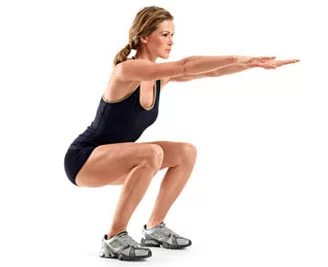
Pelvic tilts
- Your knees should be bent while you are on your back with your feet flat on the ground.
- Tighten the muscles in your abdomen and apply pressure to your lower back.
- Hold this position for a few seconds.
- Then release the pressure and straighten your back gently.
- Then return to your neutral position.
- Then relax.
- Repeat this exercise three to six times.
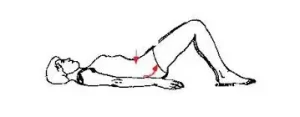
Inner Thigh Compression
- Sit or lie down with your feet flat on the floor and your knees bent.
- Place a softball or a folded cloth between your knees.
- Squeeze your knees together with the muscles in your inner thighs.
- Hold this position for a few seconds.
- Then return to your neutral position.
- Then relax.
- Repeat this exercise three to six times.

Variate your physical activity routine:
- This basic exercise comes in a variety of forms that you can try.
- For example, repeatedly tense and relax your Pelvic floor muscles quickly.
- Alternatively, practice drawing them in slowly.
- Kegel exercises can also be done in a sitting, standing, or lying down position to help you modify your posture.
- It’s best not to tense your butt, thighs, or abdominals when doing Kegel movements.
- Furthermore, avoid holding your breath. Instead, take regular breaths and keep the rest of your body in a relaxed, calm position.
How many and for how long do I practice legal exercise?
It is typical to find that your first few attempts at a Kegel barely last three to six seconds, and that performing three to six repetitions wears out your muscles. You are often doing the workout correctly when this occurs.
If you recheck your technique you can hold it for a longer duration immediately. Focusing on doing the method correctly is especially important for people who have weak pelvic floors or incontinence. Your muscle quality and tone may be weak at first, but they will gradually become better.
How can you know if you’re performing Kegel exercises correctly?
Kegel exercises shouldn’t be painful. You’re most likely holding your breath or squeezing the wrong muscles if performing Kegel exercises causes pain in your head, lower back, or stomach.
If you are experiencing discomfort or pain in your legs, or if you are having trouble activating your pelvic floor muscles, you may not be practicing Kegel exercises properly. Getting advice from a doctor could be beneficial.
Over a few weeks, if you’re doing Kegel exercises correctly, you should progressively see a reduction in your symptoms. You may notice, for example, that you urinate less frequently.
To achieve Kegels, how hard should I squeeze?
To feel Kegels working, you must clinch or tighten enough. But watch out for squeezing or applying pressure to your back, buttocks, stomach, or inner thighs. You aren’t performing the exercise correctly if you are squeezing these muscles.
Furthermore, you should avoid holding your breath by applying too much pressure. Breathe regularly during the Kegel exercises. Counting aloud might help you in keeping your regular breathing pattern.
A few words of concern:
- After learning to perform Kegel exercises, try not to do them more than twice a month. If you do the exercises while peeing, you risk weakening your pelvic floor muscles over time and harming your kidneys and bladder.
- Women who practice Kegel exercises incorrectly or with excessive force may develop excessive tightness of the vaginal muscles.
- If you stop doing these workouts, you will resume incontinence. Once you’ve started, you may have to keep doing them for the rest of your life.
- It may take several months after you begin these exercises for your incontinence to improve.
- Kegel exercises should not be used to instruct your urine stream to start and stop. Performing Kegel exercises while emptying your bladder may result in partial emptying, increasing the likelihood of a urinary tract infection.
Complications with Kegel exercises:
Even though kegel exercises are safe, precaution is still advised.
What to keep an eye out for is as follows:
- Avoid performing Kegels while urinating.
- The goal is to intensify your muscles as though you’re attempting to stop urinating, without actually doing so. You run the risk of developing a urinary tract infection (UTI).
- Avoid going overboard. This may cause strain when using the restroom.
- Engage in regular exercise.
- Kegel exercises require repetition to become more powerful, much like other workouts.
- These must be completed daily for a minimum of ten to fifteen weeks.
- Communicate any adjustments you make to your treatment plan with your doctor.
When Challenges Come Up:
- When completing Kegel exercises, don’t be afraid to ask for help if you need it.
- Your doctor or physical therapist can provide valuable guidance to help you identify and target the right muscles.
- Certain situations may benefit from biofeedback or vaginal-weighted cones. When using a vaginal cone, you have to place it into your vagina and hold it there while you perform your regular activities by contracting your pelvic muscles.
- During a biofeedback session, a pressure sensor is put into your vagina or rectum by your physician or another medical practitioner.
- Your pelvic floor activity will be measured and shown on a monitor when you contract and release your pelvic floor muscles.
When To Expect Results:
It may take a few weeks to many months to see results from regular Kegel exercises, such as reduced frequent urination episodes. Set up daily Kegel exercises to take advantage of the long-term benefits.
Exercises to stay away from:
If a person has a really weak pelvic floor, some workouts could be too challenging for them. You face the risk of further weakening your muscles and becoming incontinent by performing the workouts.
A person ought to stay away from performing the following exercises until they have worked on their pelvic floor for several months:
- Sit-ups including straight-leg lifts into the air
- Hard weightlifting with few repetitions
- Two-leg raises
- Running, jumping, and other vigorous exercises
Urinating should not be interrupted to evaluate pelvic floor muscle control. The possibility of incomplete bladder emptying may arise from this, raising the risk of urinary tract infections and other urinary problems.
If at all possible, consult a physician and a physical therapist to find out if there are any particular exercises you should avoid following surgery or childbirth.
When to Consult a Doctor:
If you are unsure whether you are performing Kegel exercises correctly, speak with your healthcare professional. To make sure you are completing them correctly, your provider can verify. A physical therapist who specializes in pelvic floor exercises can be recommended to you.
Summary
Exercises that strengthen the muscles in your pelvic floor are called Kegel exercises. Weak pelvic floors can have a variety of causes. Signs of a weak pelvic floor include spilling waste or urine and experiencing the urge to urinate when not necessary. Work your way up to performing Kegels multiple times a day. If you have any doubts about whether you are doing Kegel exercises correctly or have any queries about them, never be afraid to ask for medical advice.
Someone can strengthen their pelvic floor by walking more, standing up straight, and sitting in the right postures in addition to doing daily pelvic floor exercises. Squeezing the pelvic floor muscles each time you cough, sneeze, or lift something heavy is an additional option to consider. By doing so, incontinence can be prevented and the pelvic floor strengthened.
FAQ:
How does the Kegel exercise work?
The pelvic floor muscles can become weak due to a variety of factors, including aging, surgery, and delivery. If these muscles are weak, you may start leaking small amounts of gas, urine, or bodily waste. Kegel exercises help to block these leaks by strengthening the muscles.
For whom is Kegels necessary?
If you laugh, sneeze, cough, and a few drops of urine leak (stress incontinence), you may benefit from doing Kegel exercises.
Desire to urinate rapidly and intensely just before considerable urine loss (urinary urge incontinence).
Leaky waste, also known as fecal incontinence.
Walking: Is it a Kegel exercise?
Perform some Kegel exercises while walking for the best results. Walking is a great workout for strengthening your pelvic floor muscles, which are further improved by maintaining a healthy weight.
Is doing Kegels every day okay?
Regular Kegel exercises can lead to benefits including less frequent urination within a few weeks to several months. Make Kegel exercises a regular part of your daily routine for ongoing benefits.
What is the sensation of a kegel?
Breathe in and feel your pelvic floor muscles expand or develop. Breathe out slowly and tense your pelvic floor muscles. It ought to have a constriction-like feeling. Tent for three to five seconds.
How come my Kegels are so weak?
A weaker pelvic floor can result from pregnancy, delivery, male prostate cancer therapy, obesity, and the straining that comes with long-term constipation. Muscle toning is the goal of pelvic floor workouts.
Using Kegel balls: How do you do it?
Squeeze the pelvic floor muscles around the balls when you’re lying down.
Ten to five seconds should be used to hold the contraction.
After letting your muscles relax and taking a little break, resume the squeeze.
Is doing Kegel exercises safe?
If you can learn to both relax and strengthen your muscles, doing Kegel exercises shouldn’t harm you. Kegel exercises are not something you should overdo. Additionally, you shouldn’t try to stop your pee flow for an extended time. If you have a urinary catheter in place, avoid performing Kegel exercises.
How should my Kegel muscles be squeezed?
As though you were trying to contain your gas, tighten your muscles. Alternatively, contract your muscles as though you were controlling the flow of pee. You should not move your buttocks, legs, or belly. After three seconds of holding the squeeze, let go for five to ten seconds.
What is Kegel in reverse?
“Reverse Kegels” is another name for pelvic floor relaxations. There is “down training” or “dropping” of the pelvic floor muscles throughout this exercise. Dropping your pelvic floor muscles feels like that satisfying sensation you get when you’re in the toilet.
What negative effects might people expect from Kegel exercises?
Frequent urination is not recommended, and neither is it a good idea to perform Kegel exercises while your bladder is full. Your chance of developing a urinary tract infection (UTI) can increase if your bladder is not completely emptied. If you are still unsure that you have identified the correct muscles, consult with your doctor.
I perform too many Kegel exercises. What happens?
Although there is a potential benefit for both genders from Kegel exercises, performing too many or the incorrect kind can worsen existing difficulties or cause more muscular strain and pain. Kegel exercises should never hurt. Choose quality over quantity when performing Kegel exercises.
References:
- Kegel exercises: A how-to guide for women. 2022 December 6. Clinic of Mayo. Kegel exercises (art-20045283) https://www.mayoclinic.org/healthy-lifestyle/womens-health/in-depthJust visualize yourself. muscular system of the pelvic floor. Inside-Text Reference: (Kegel Workouts: An Instructional Manual for Ladies, 2022).
- C. C. M., Professional (n.d.). Kegel exercises. Cleveland Medical Center. 14611-Kegel Exercises: https://my.clevelandclinic.org/health/articles
Reference within the text: (Professional, n.d.) - C. M. Story (2017, September 15). Are Kegel Exercises Effective for Men? Healthline. https://www.healthline.com/health/men’s-kegel-exercises#definition
The text reference is Story (2017). - R. N. M. Crna (2023, May 30). Methods for performing exercises on the pelvic floor. 3/22720 in the article on Medical News Today
Citation inside text: (Crna, 2023) - Image 2, Squats [unknown]. The website Hingehealth provides tools, articles, and a squat guide.
In-text Reference: (Squats, n.d.) - Image 3, Heppe E. (2018) 22 May. Heppe Chiropractic: The One Postpartum Activity Every Mother Should Do. Chiropractic Heppe. The greatest postpartum pelvic tilts can be found at https://www.heppechiro.com/heppe-chiropractic/2018/3/23/
Heppe (2018) is cited in the text. - Image 4, Yahoo belongs to the Yahoo brand family. (No date). https://www.yahoo.com/lifestyle/exercises-for-the-inner-thighs-to-reduce-back-213323590.html
Reference within the text: (Yahoo Is a Member of the Yahoo Family o

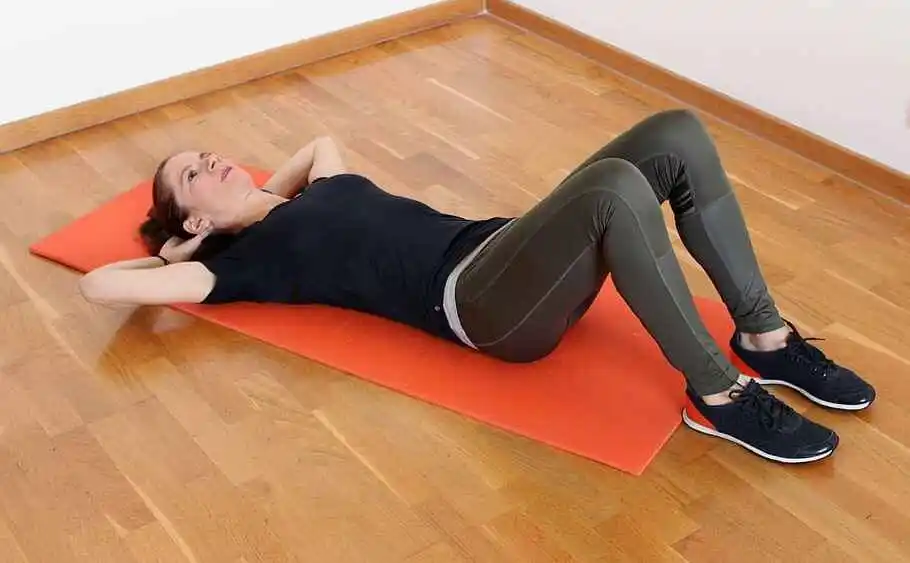



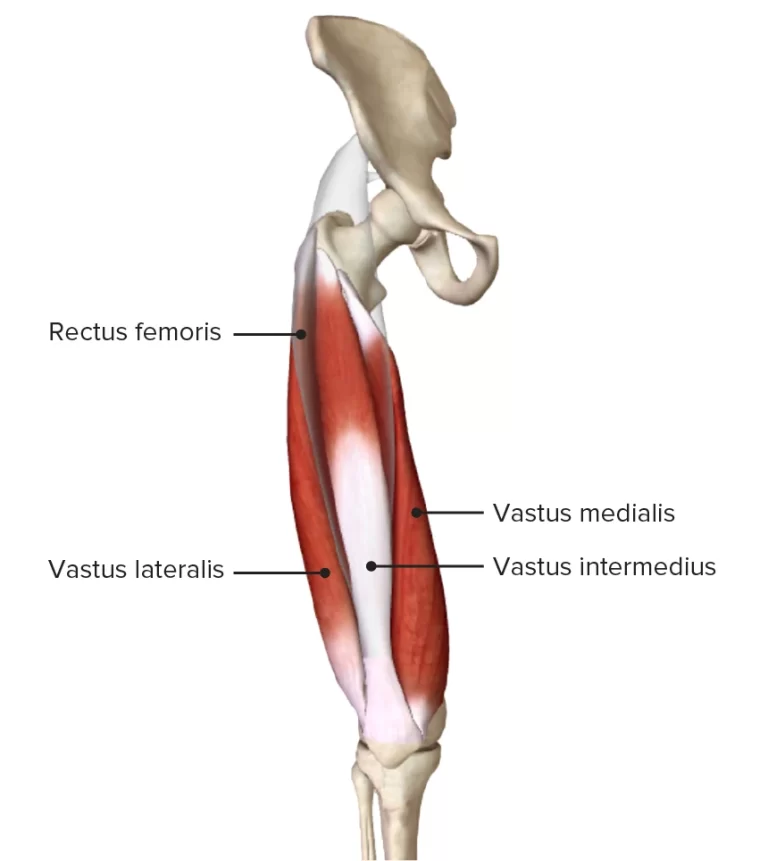
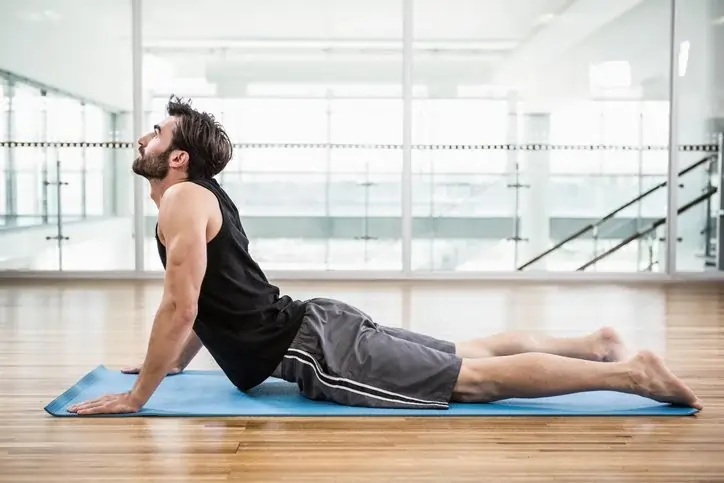

One Comment